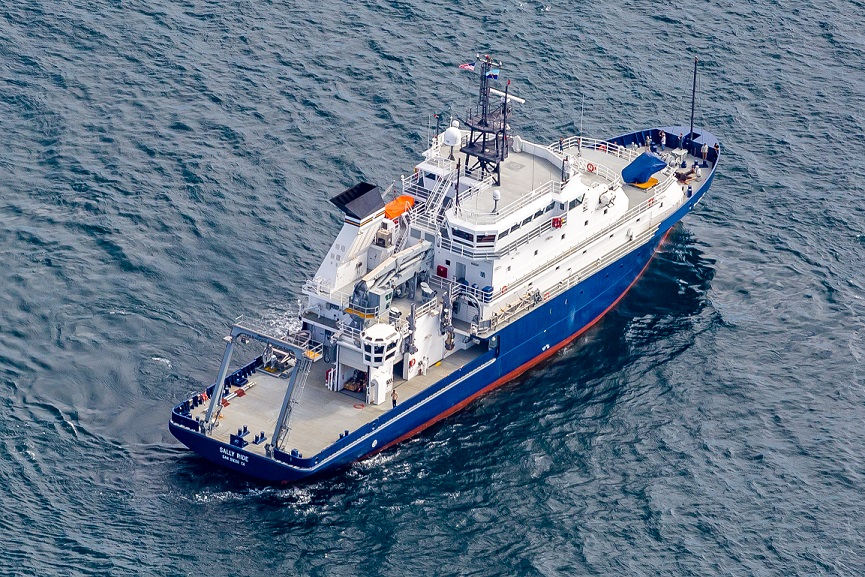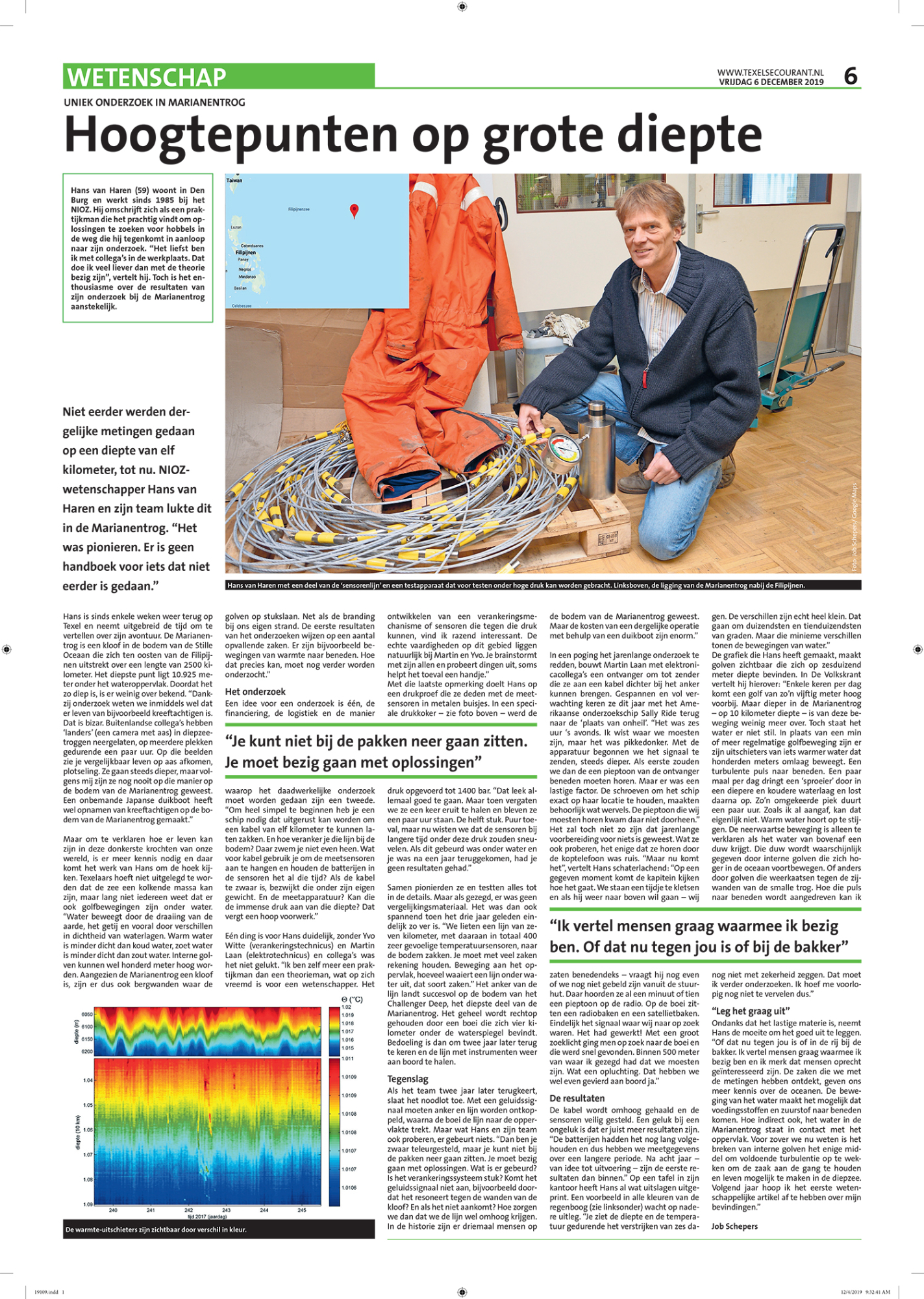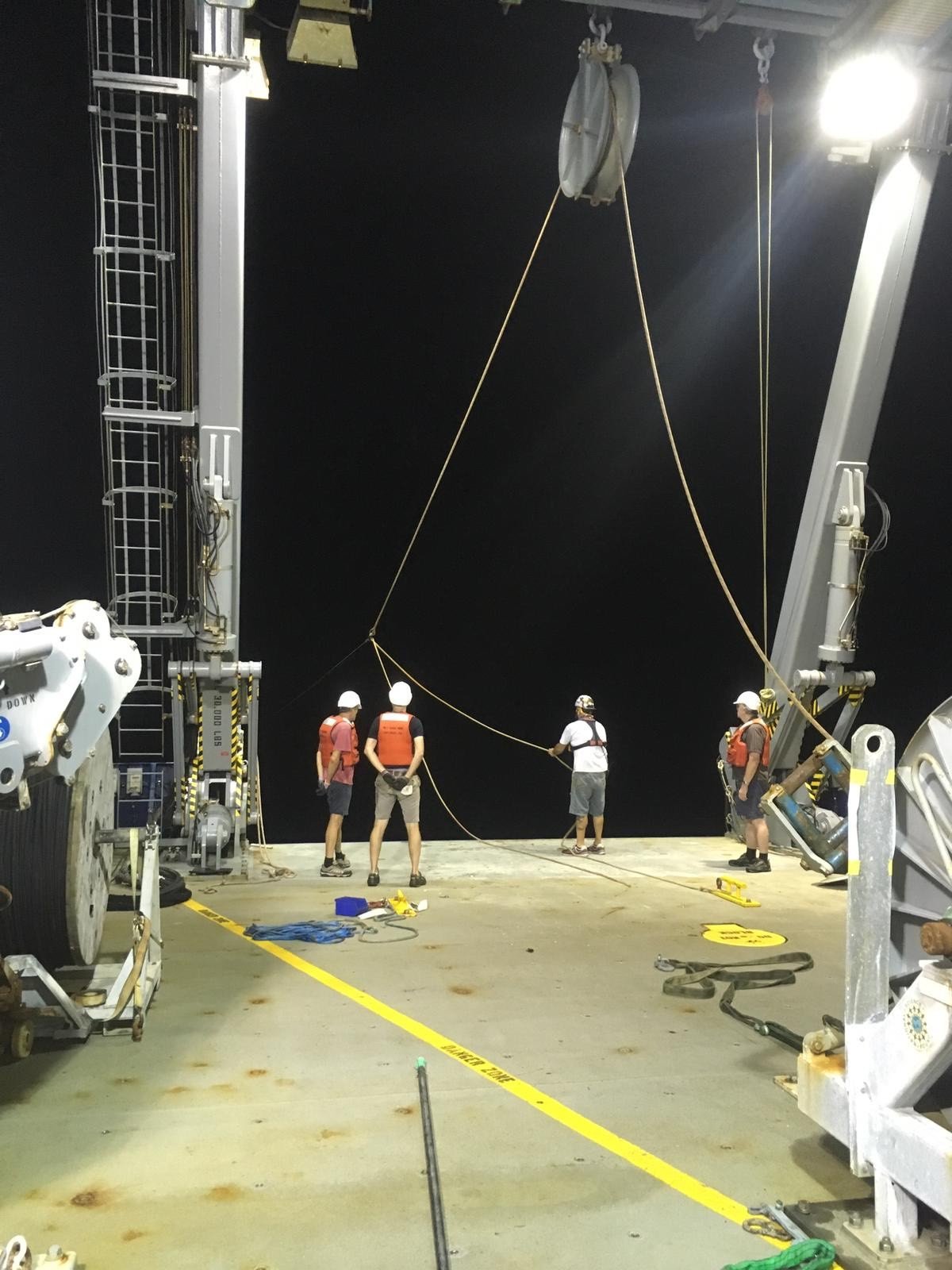Successful mooring recovery from Challenger Deep (Mariana Trench)
Specially designed instrumentation on a 7 kilometers mooring line
The 7 kilometers long mooring line consisted of top-floatation around 4 kilometers depth, two sections of Dyneema neutrally buoyant 6 millimeters line, two Benthos acoustic releases and two sections of self-contained instrumentation. Around 6 kilometers depth two current meters were mounted below a 200 meters long array of 100 high-resolution NIOZ temperature sensors. In the lower 600 meters above the trench-floor 300 specially designed NIOZ high-resolution temperature sensors were mounted. These instruments were tested to withstand 1400 Bar of static pressure.
The two sections of temperature sensors with less than 0.1 mK noise level are used to study the internal wave motions and turbulence to verify the hypothesis that turbulent processes are needed for sufficient replenishment of oxygen and nutrients to sustain life in deep trenches.
Mooring deployment was performed from the German RV Sonne in November 2016. The moored instrumentation was meant to remain in the Challenger Deep for 1 to 1.5 years, but eventually remained under water for nearly 3 years.
Why first recovery failed, but second recovery is successful
The Benthos acoustic releases can withstand an ambient pressure of 1200 Bar. It was therefore thought that the acoustic performance would be equally capable to cover 11 kilometers ranges, sufficient to be reached using a deck-unit from the surface vessel. Unfortunately, this turned out not to be the case in November 2018 from the RV Sonne. No acoustic contact could be established with the releases and recovery failed.
Thereupon, NIOZ electro technician Martin Laan and colleagues from the Department of National Marine Facilities designed a ‘deep release unit’ by remodeling an existing Benthos acoustic release to a hydrophone capable of repeatedly pinging two release commands up to 5 hours after being switched on. This unit was lowered by one of RV Sally Ride’s winch-cables early November 2019. In hindsight, the unit managed to contact the near-bottom releases after about 15 to 20 minutes of lowering, i.e. around 1000 meters depth or at a distance of approximately 10 kilometers. Although during nighttime, once released from the bottom-anchor the mooring-line recovery went very smoothly, due to radio beacons, Iridium satellite beacon and swift manoeuvring with searchlights on. After 6 hours of spooling the entire line and all instrumentation were on board.

First results: internal waves in the Challenger Deep
The special pressure testing up to 1400 Bars paid off very well. Only 15 of the 400 sensors had mechanical problems. At least 1.5 years of useful data were obtained, which is more than expected. Preliminary analysis demonstrates weak temperature variations, with all dynamical variations in the 1 mK range around 6 kilometers depth and in the 0.1 mK range around 10.5 kilometers depth. Internal waves are abundant around 6 kilometers. They influence the very weak stratification around 10.5 kilometers depth by pushing convective type turbulent pulses of 1 to 2 hours duration obliquely from above and 3 to 4 times a day. While the net turbulence is weak, about 10 times less than in the open ocean, the newly observed phenomenon of pushed convection is capable of generating short-term turbulent pulses 10 to 30 times higher, turbulence levels being higher than found around 6 kilometers. Further analyses are aimed to establish the source of the dominant internal waves pushing and the potential variations with background conditions such as passing atmospheric storms.

